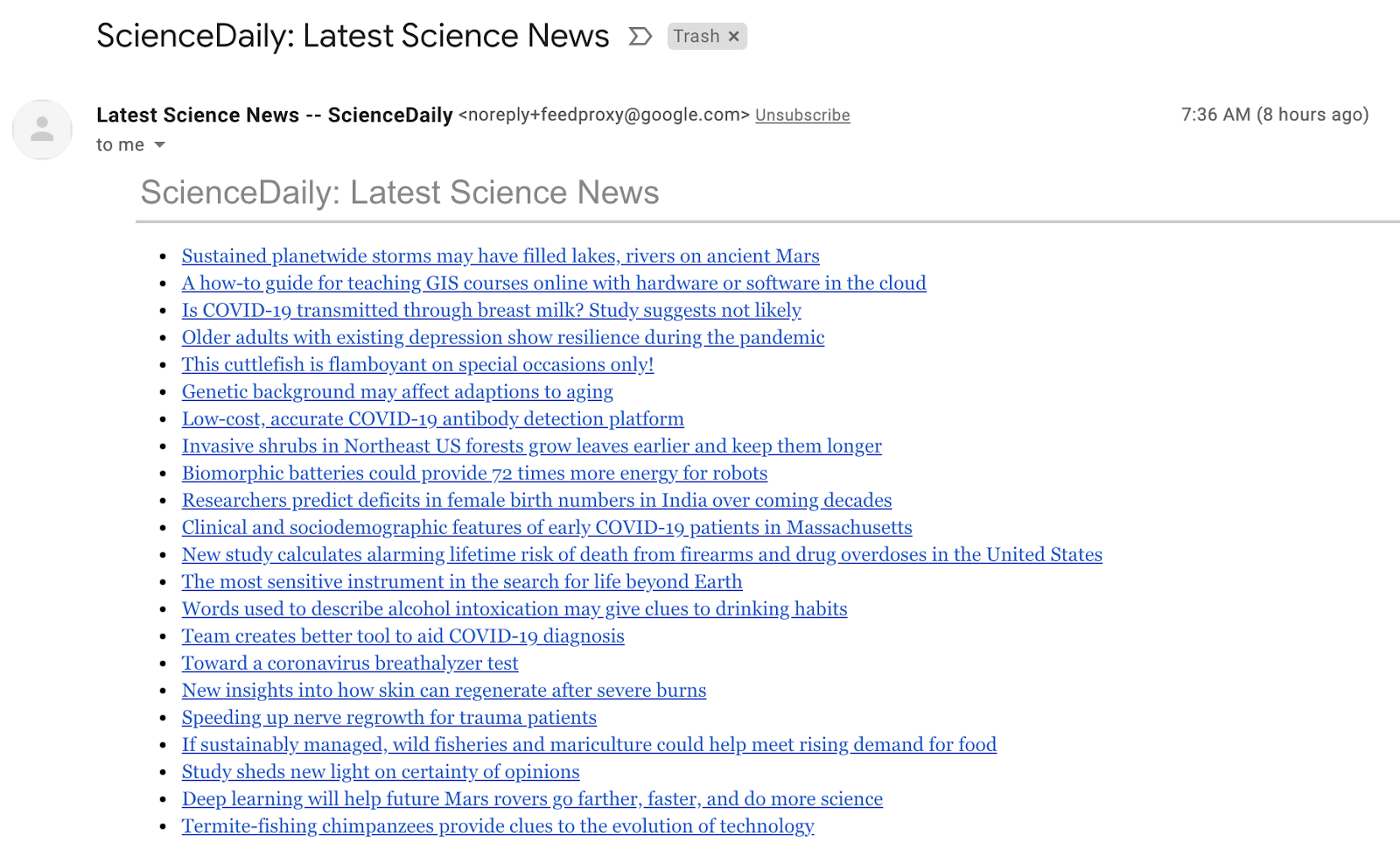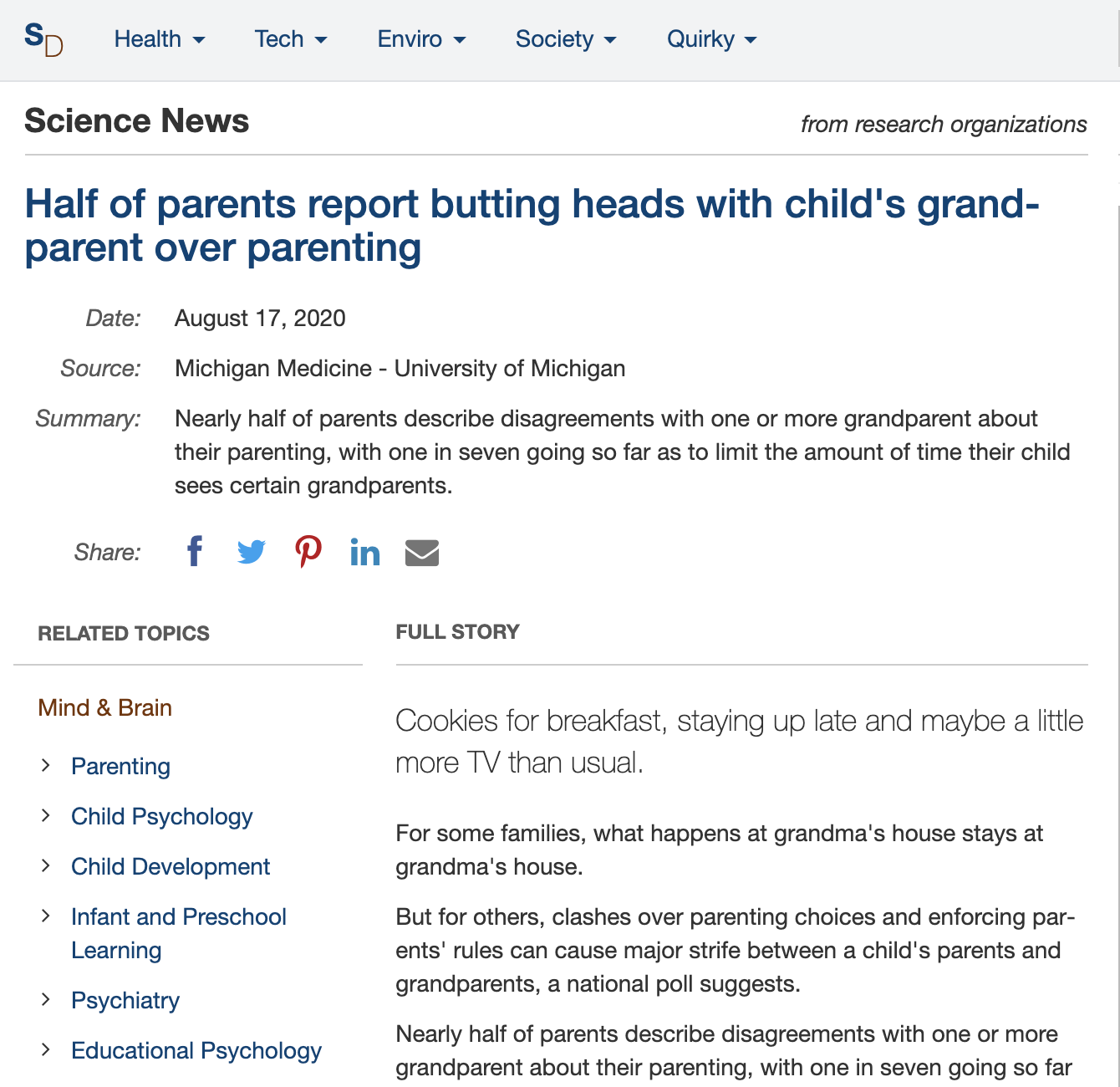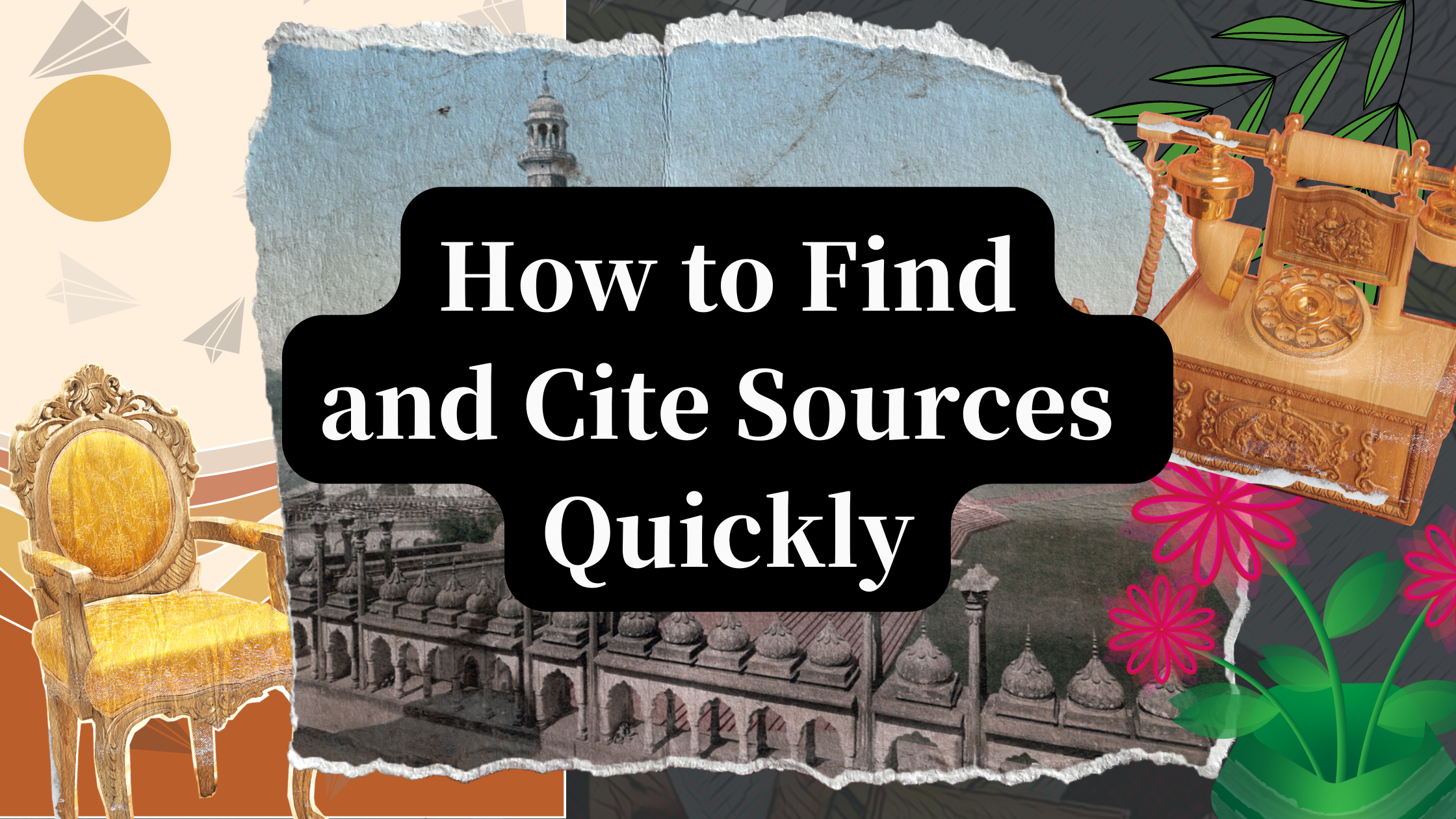Want to earn your readers’ trust faster? Show them the receipts.
In journalism, scholarly research, and many other forms of professional writing, adding in-text citations that show your references is mandatory. But there are marketing and visibility benefits to having good in-text citations, too.
Links to other websites can improve a web page’s search engine visibility, and more than ever before, readers want to see your information sources when you make assertions or bold claims. Citations give your writing more oomph, and there are different types of sources—primary, secondary, and tertiary—which are useful in different ways.
That being said, citation research can quickly become a timesuck. I’ve lost track of how many times I’ve poked around online for a good journal article or publication to link to, only to find myself going down a research rabbit hole. It’s important to cite sources, but we must do so while also managing our time well.
Key Takeaways
- If you are writing for research projects, a scholarly or academic journal, or a government entity, you might need to formalize your reference list using APA style or a certain publication format.
- Primary sources are ideal. These are sources that directly experienced the event or information at hand.
- Secondary sources interpret primary source data.
- APA style typically is necessary for journal articles or submissions to a scholarly publication. APA reference information may include chapter title, publisher location, author’s surname, page numbers, or other access details.
- Most of us just want to get quicker at making a text citation so that our writing is more durable and persuasive.
Here’s what to know about citing sources, how doing so improves your writing, and popular citation formats for both blogging and academic pursuits.
What Are In-Text Citations?
An in-text citation occurs when an author references a different publication or web page within an article. This is usually denoted with a hyperlink, which looks like this, or a footnote.
Hyperlinks are more common, because they allow users to check a source without losing their place on the page. But some websites that cover a lot of medical or other regulated information may use a footnote that shows a tooltip when you hover, giving the reader additional context without having to click through.

Scholarly writing has more rigorous standards for in-text citation. In the book “Why Trust Science?”, author and Harvard professor Naomi Oreskes says the following:
“What makes scientific claims reliable is the process by which they are vetted. All scientific claims are subject to tough scrutiny, and it’s only the claims that pass this scrutiny that we can say constitute scientific knowledge.”
Cite research in any part of an article where you want to reinforce your point with evidence and conclusions that have already endured this review process. The more scholarly or journalistic your article, the more rigorous you’ll need to be with your assertions, but any amount of citation will help to overcome reader skepticism.
Primary, Secondary, and Tertiary Sources, Explained
Primary sources refer to original material or documentation. These include research papers, works of art, autobiographies, or eyewitness accounts. The source directly experienced the subject matter at hand.
Secondary sources interpret these primary sources. A book review would be an example of a secondary source. So would a viral Twitter thread commenting on breaking news. The source is commentary or analysis of the primary source. In some cases, the primary source is not available—for example, a biography of a historical public figure.
Tertiary sources are collections of primary or secondary sources. Based on the definitions above, it would sound like these sources are less reputable at first. But they can be helpful for getting an overview of the information that is available at a high-level. An encyclopedia is an example of a tertiary source.
Examples of Primary Sources
There are several types of primary sources you can draw from to add depth to your journal article or story. In web writing, an in-text citation often falls into one of these three buckets.
- Direct quotes: If you include a quotation from an interview or someone else’s writing, you need to cite it. When quoting, we want to use quotation marks and pull a direct quote from a subject matter expert.
- Other website articles: If another article on your website has more information on what’s being talked about in a sentence, consider linking to that article. This is called internal backlinking, and it has SEO benefits.
- Scientific research: When referencing a study or report, link back to that original research. Don’t link to a media article that reported the research—link to the actual research source.
Primary sources are usually best, but some aggregators may not want them. For example, Wikipedia does not allow original research in its pages. They prefer secondary and tertiary sources, because these sources give more context and analysis that can help readers get a clearer overview of the topic at hand.
Examples of Secondary Sources
Secondary sources comment on or interpret primary sources. Here are some examples:
- Commentary on a speech.
- A review of a movie.
- Explanations of photographs.
- A biography.
- An opinionated comment on Twitter about a news story, which may or may not give sufficient context.
Here’s an example: Back in music school, my music history professor was a Beethoven scholar. He wrote Beethoven’s biography. But Beethoven was obviously long dead before any of this research began.
Since Beethoven can’t really be interviewed, we have his compositions (primary source), and then we have analysis of his work (the biography, classes on Beethoven, et cetera). In this case, secondary sources are our most viable option.
Examples of Tertiary Sources
A tertiary source is an index or collection of primary and secondary sources. These sources are more like a digest; they aspire to give a reader a high-level overview of what information is available on a topic and where to find it, which in some cases can be just as helpful.
- Encyclopedias.
- Dictionaries.
- Aggregated industry publications.
- Meta-analyses in science (research on the research).
Tertiary sources can help you locate citations more quickly, but they may not be the right fit for your final sourcing requirements. If you’re writing a journal article, check with your target publication manual to see if they use a different format for in-text citations.
3 Quick Ways to Source Quality Research for Articles
No. 1: Subscribe to a science aggregator
A science aggregator distribution list will send daily or monthly emails that summarize new research published by university teams and laboratories around the world. Each email is like a reference list of the latest magazine articles, and it takes just seconds each day to scan.
I use ScienceDaily, personally, which is free.

Most of this research is, well, really scientific. Think biology, chemistry, or social sciences research. However, nearly every day there are new published studies in the fields of psychology, sociology, and human behavior that may apply to you. The following example was from a published study that examined the relationship between parents and grandparents.

If you’re new to ScienceDaily, you’ll find a treasure trove of science on their website that you can bookmark for future reference or citation in your articles. I use the “Mind & Brain” category a lot. Often, research you discover will actually spark ideas for new articles too. If you’re stuck on brainstorming new ideas, perhaps it’d be easier to let science inspire you instead.
No. 2: Familiarize yourself with Google Scholar
Running a web search on certain words or phrases along with the word “study” or “statistic” can help you find the research you’re looking for. If you want to ensure your secondary source citation is credible right from the start, however, consider taking a moment to learn your way around Google Scholar.
Google Scholar will filter search results to only include published research. You can also add parameters to further tighten your results. For example, one publication I write for asks that I only cite quality research that has been published in the last 12 months.
Here’s a search I did on personal productivity that met those requirements. Notice how there are filters to see how often an article has been cited by other sources, and also how a full citation in APA format is ready to go if needed.

No. 3: Use a monitoring tool like Talkwalker Alerts
Real-time or daily recap alerts from free resources like Talkwalker or Google Alerts are a great way to see how certain topics in your industry are being covered in the current news cycle, as well as what new research is being cited to back up those claims.
I prefer Talkwalker alerts to Google Alerts, and I set my filters to receive a once-a-day recap of new publications in the news about a certain topic. Consider setting this up for yourself for several of your most written-about topics so you can have your finger on the pulse of what’s being accepted and published in your field.

Pro Tip::Create an alert for your own name. This can help you monitor times when your work is being mentioned or published. Sometimes editors or journalists publish you and forget to circle back with you and let you know an article went live.
How to Format In-Text Citations
My experience is more with magazine articles and blog writing, so I’ll speak to those types of in-text citations first.
The quickest way to provide readers with in-text citation is with a hyperlink. Use Command+K on a Mac to link highlighted text at any point. When you hyperlink, you may want to provide a short description of the research or person to give readers sufficient context without them having to leave a website. A common way to do this is to name the person or company, then also name what that company does or is, in a few words.
Example: “There were 100 bottles of beer on the wall,” according to a report from Statista, a data analytics company.
What Is APA Format?
Up until now, we haven’t touched on APA style or APA format. If you’re wanting to write for scholarly or scientific publications, however, proper citation using an APA reference will likely be a requirement. Research papers are a totally different beast; a research paper or research project will often require extensive in-text citations in APA format for peer review. Since your findings will be under scrutiny, your references list will need to be easy to follow and cite.
The American Psychological Association (APA) has a comprehensive guide of general guidelines for APA citation. These guidelines are in place to help prevent plagiarism and give researchers a publication manual for their journal articles and research papers.
Your APA citation should include the year of publication (and publication date if you can find it), article title or book title, journal title, page number or page numbers referenced, volume number if needed, and date accessed in order to be considered a full reference. Full references can feel daunting at first, but know that the same format is applied for any in-text citation in APA style, and this information is easy to double-check with a quick Google search if you’re rusty.
Frequently Asked Questions
How can I pitch my scientific research to the media?
The key to making your pitch more media-friendly is to give it mainstream appeal. Simplify your language, remove industry jargon, and make your pitch helpful to consumers by sharing what they should know or do with this new information.
How do I put links into sentences quickly?
On a Mac, highlight the text you want to link, then press Command+K. This is the keyboard shortcut to create a hyperlink, and it carries over as a shortcut to many other desktop apps, too.
What types of websites should I link to for citations?
Whenever possible, link to the original research, as published in a scientific journal. It’s also helpful to link to websites that end in .edu or .gov, as entities need special permission to use these URL suffixes, so they are often considered more credible.
Level Up Your Citation Game Today
Research makes everything you write sound more professional and legitimate. But the process of finding research can quickly distract you and derail a writing session. Organize your time by intention, use these tools to stock up on solid statistics, and you’ll see your writing pack more punch in no time. ◆
Thanks For Reading 🙏🏼
Keep up the momentum with one or more of these next steps:
📣 Share this post with your network or a friend. Sharing helps spread the word, and posts are formatted to be both easy to read and easy to curate – you'll look savvy and informed.
📲 Hang out with me on another platform. I'm active on Medium, Instagram, and LinkedIn – if you're on any of those, say hello.
📬 Sign up for my free email list. This is where my best, most exclusive and most valuable content gets published. Use any of the signup boxes on the site.
🏕 Up your writing game: Camp Wordsmith is a free online resources portal all about writing and media. Get instant access to resources and templates guaranteed to make your marketing hustle faster, better, easier, and more fun. Sign up for free here.
📊 Hire me for consulting. I provide 1-on-1 consultations through my company, Hefty Media Group. We're a certified diversity supplier with the National Gay & Lesbian Chamber of Commerce. Learn more here.


